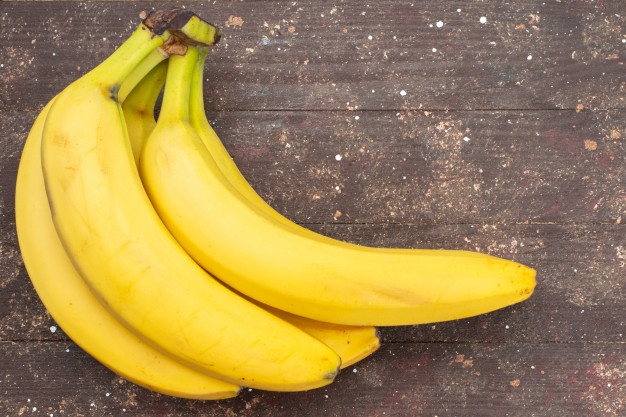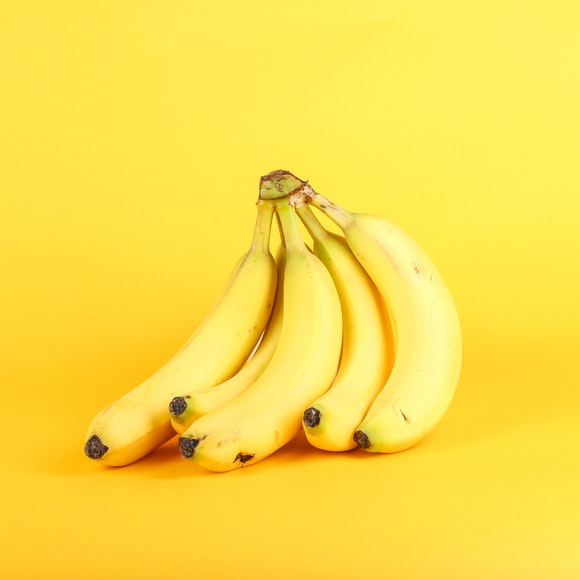If you have ever bought a ripe banana, you know that it may not taste as good as you expected. If you notice that the peel starts to turn yellow or has brown spots, you should throw it out immediately. It’s also possible to smell the fruit. If the banana smells like rotten eggs, then you should discard it. However, if the banana has an unpleasant smell, it’s probably already past its prime. If you want to know to how to tell if a banana is bad, read further.
The first clue is the color of the banana. If the banana is black, it’s overripe and will not ripen further. Another sign is mold growing on the banana’s skin, indicating rottenness inside. A rotten banana will not have mold but will look and smell sour, and it should have a powerful, fruity smell. If the skin is brown or black, you should avoid buying it.
Banana Nutrition Facts
How to Tell if a Banana is Bad?
1-Ripe bananas should have a brilliant yellow peel and be somewhat firm when picked. A fully ripe banana is easy to spot, and it’s a little more challenging to discern the difference between an overripe banana and a rotten banana.
2-An overripe banana’s peel may have dark dots or streaks of brown and black, or it may be entirely black. Overripe bananas are mushy and have a few soft areas. Overripe bananas may have soft areas due to bruising and are softer than ripe bananas. Although overripe bananas are not as attractive as perfectly yellow bananas, they are still safe to consume. Because the sugar is more concentrated and has a sweeter flavor, overripe bananas may taste better than younger bananas. The majority of people prefer slightly overripe bananas.
3-The difference between an overripe banana and a rotten banana is thin, and the shift can happen swiftly. It’s difficult to know if a banana is too ripe to eat by sight alone because an overripe but safe-to-eat banana can have a lot of black on the peel. Instead, you’ll have to look into it more to see if a banana has gone wrong. Mold can often be found on the peel or at the stem of a rotten banana. A banana skin will occasionally split apart, allowing mold to grow at the break. Because it blends in with the color of the flesh inside the peel, this mold can be difficult to spot. Any bananas with mold on them or peels that have split open are rotten.
4-There are a few more signs that a banana is rotting besides mold. The most evident indicator is usually mildew or decay odor. Any symptom of rotting should be seen as a warning that the banana is unsafe to consume. When a banana goes terrible, it may leak liquid or feel liquid behind the peel. Another clue that a banana has gone rotten is the presence of fruit flies near a bunch of bananas.
5-A banana that has been peeled may show even more indicators that it has gone wrong. The flesh of a ripe to overripe banana should be white or cream-colored. A banana that is either too ripe to eat or has gone sour on the interior may appear brown.
What are the Ways to Maintain the Freshness of Bananas?
1-A rotten banana with mildew and symptoms of deterioration isn’t good for you. The good news is that you can keep these fruits fresh for longer with a few simple tricks.
2-Bananas should be stored in plastic bags in the refrigerator, according to Fine Cooking. Some people put them in the freezer to keep them fresh, which isn’t a good plan. Chill damage to these fruits can occur at temperatures below 50 degrees Fahrenheit, compromising their flavor, color, and texture.
3-After cutting a banana, Cooking Light recommends leaving the peel on. This protects the fruit from coming into contact with oxygen. Slice them as soon as possible before using them.
4-To prevent oxidation and enhance flavor; Cooking Light recommends covering sliced bananas with lemon or lime juice, vinegar, or honey diluted with water. Acidic compounds, such as orange juice slow down the oxidation process in general.
5-Donot trash your bananas if they’re already fully ripe. Make homemade ice cream, fruit purees, banana bread, smoothies, granola bars, pancakes, and desserts using them instead. For an energy-boosting snack, combine an overripe banana with oats and peanut butter, bake the batter, and cut it into cookies.
What Causes Bananas to Turn Brown?
Bananas are high in potassium, fiber, and polyphenols, and they provide a lot of nutritional value. It can replace your go-to snacks and make it easy to cut down on sugar with only 112 calories per serving (4.4 ounces). According to a December 2018 analysis published in Food Quality and Safety, the catechins, carotenoids, and other antioxidants in this fruit may protect against heart and liver disease, minimize free radical damage, and improve mood.
Unfortunately, these delectable fruits have a short shelf life, and their hue fluctuates a lot from day to day. In little than a week, a green banana can turn brown.
Is it Safe to Eat an Overripe Banana?
The peel of a ripe banana is yellow with many brown dots, and its flesh could also have tiny brown patches. However, this evidence of ripeness does not indicate that the banana is rotten. You may eat the fruited plain or add it to smoothies, protein shakes, and homemade desserts by simply cutting off the brown sections.
Ripe bananas may be better for you than green bananas. Unripe bananas are high in tannins and resistant starch, which can induce or worsen constipation, according to a review published in Pediatric Gastroenterology, Hepatology, and Nutrition in December 2014. Resistant starch is a form of carbohydrate that does not ferment in the intestine but remains intact in the digestive tract. When green bananas are cooked or ripe, the amount of carbohydrates and tannins in them drops.
How to Keep Dried Bananas Safe?
When it comes to dried bananas, the ideal location to keep them is in the pantry or kitchen, where they can stay cool and dry. The fridge is a better alternative if you live in a hot and humid region.
Once you’ve opened the packaging, either seal it tightly or place it in an airtight container if that’s not possible. This is especially crucial if you keep the dried items in the fridge, where the air is damp, and the dried bananas can readily absorb moisture.
Conclusion
Another sign that a banana is ripe is if the flesh is entirely yellow. This is the primary indicator of a ripe banana. It’s also good if the skin has been cracked or creased. You can eat a mushy banana if it’s too ripe. If you’re not sure, you can still use it for baking. A ripe banana smells like rotten eggs. If it has a smell of mold, it’s a ripe banana. A wormy banana is not worth eating. The smell of rotten eggs will indicate that it’s rotten. You’ll want to avoid these bananas at all costs. If you’re not sure whether a banana is ripe, you can consult a fruit expert.
A banana can be overripe in a few days. It may be black, mold, or be too soft for your taste if you see black or brown spots on a banana. If it’s mold, you should throw it away. If it’s black, you can’t eat it. But it can be eaten if it’s not overripe.





